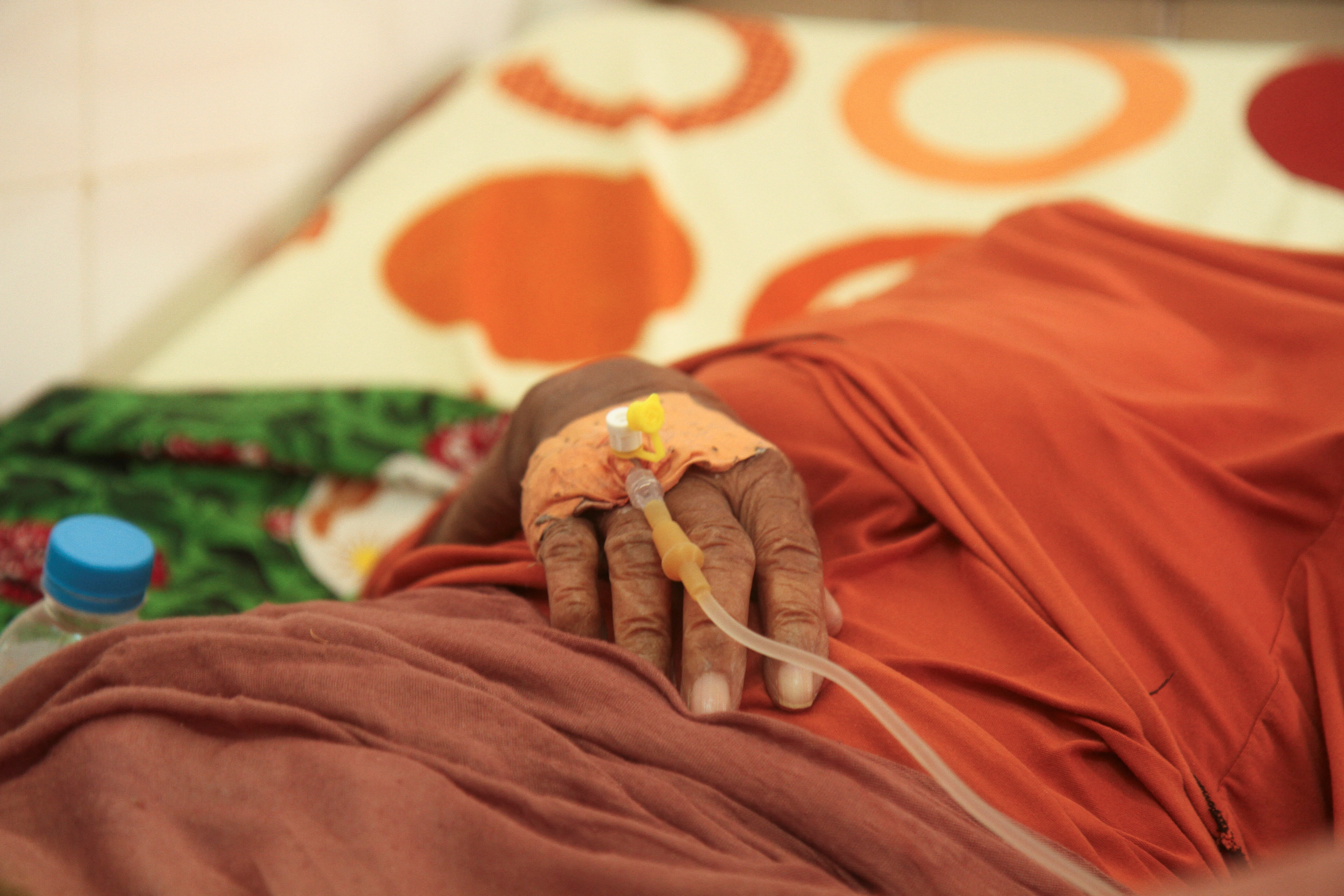John’s Crazy Socks: the father and son team that spreads happiness

They sold out of their inventory after the very first day of trading.
Image: REUTERS/Shannon Stapleton
Stay up to date:
Family Businesses
Mark Cronin and his son John are on a mission. The pair started John’s Crazy Socks with the idea of “just spreading happiness”, but they’ve also managed to sell a lot of socks.
The father and son team started the company in December 2016, in Long Island, New York. Things got off to a good start and they finished the first day of trading by selling their entire inventory of 452 pairs.
Since those early days, sock sales in the hundreds of pairs have turned into sales of thousands. In a relatively short time the company has generated over $4 million in revenue, hired 35 staff and has moved to larger premises to deal with demand.
John is no regular entrepreneur. He has Down syndrome, but this has never stopped him from being a success. After graduating from high school, he decided he wanted to be a businessman and asked his father to join him as his partner. Realizing his son might have difficulty finding a job, Mark agreed.
The first idea they came up with was a food truck. But, as neither John or his dad could cook, they abandoned the truck idea and turned instead to socks.
"I want to sell crazy socks. Why socks? Because it's fun, it's colorful. I like to be creative and I want to see wonderful things here. It lets me be me", John told Reuters.
Keys to success
The business is built on four pillars that reflect the co-founders’ view of the world. “We have a social mission and a retail mission, and they’re indivisible”, Mark explains.
1. The first pillar involves inspiration and hope. Both sock-preneurs want to show the world what’s possible when someone is given a chance. The company currently employs 16 staff of differing abilities, who represent almost half of the workforce. The father-son team have been quick to realise the value of employing this largely untapped pool of workers.
“That’s a good business decision,” Mark says,.“It’s no charity, it’s no altruism. It helps our business run and succeed.”
2. Secondly, the company supports a variety of charities. Each pair of socks they sell generates a donation, with some individual sock designs linked to specific causes. Five percent of all profits go to the Special Olympics, which keen rower John has competed in. So far the company has generated $130,000 for charities like National Down Syndrome Society and Autism Speaks.
3. Next, they keep it personal and try to make a connection with their customers. All of them. Every sock sale is shipped the same day that the order is received and arrives with a thank you note, a discount coupon and a piece of candy. John even hand delivers them if you live in his neighborhood.
4. Finally, they offer a dazzling variety of socks. Over 1,900 styles, in all sorts of crazy designs.
Socks and shares
The success of John’s Crazy Socks reflects growth in the sector globally, which was worth more $42 billion in 2016, and is expected to rise to $75 billion by the close of 2025, according to Transparency Marketing Research figures.
Analysis of the 2016 world sock market by Persistent Marketing Research shows that the highest demand was in the Asia-Pacific region, due to the number of consumers, regional population growth and the abundance of new retail outlets opening in markets like China, India, Malaysia and Singapore.
Steady growth is forecast for the US sock market, with developing economies like Brazil in South America, and GCC countries across the Middle East and Africa expected to drive future growth.
Work, fun and fame
Mark and John work hard to make their business a success: A typical day starts at 9:00 a.m. and can last until 8:00 p.m. John attends trade shows, interacts with customers and suppliers, and thinks up sock initiatives like Sock of the Month and Monday Madness Mystery bag, while leaving dad to deal with the technical side of the operation.

Although John is the public face of the business, both Cronins are making the most of their 15 minutes of fame. As well as spreading their message of happiness on YouTube, they have made TV appearances on Fox business and the BBC. This exposure has brought them to the attention of one or two new clients, including former US president George W. Bush and Canadian Prime Minister Justin Trudeau.
Both men enjoy what they do and with the sector forecast to expand worldwide, the future looks bright.
Don't miss any update on this topic
Create a free account and access your personalized content collection with our latest publications and analyses.
License and Republishing
World Economic Forum articles may be republished in accordance with the Creative Commons Attribution-NonCommercial-NoDerivatives 4.0 International Public License, and in accordance with our Terms of Use.
The views expressed in this article are those of the author alone and not the World Economic Forum.
Forum Stories newsletter
Bringing you weekly curated insights and analysis on the global issues that matter.
More on Health and Healthcare SystemsSee all
James See
November 7, 2025
Shyam Bishen
November 5, 2025
Naveena Nekkalapudi
October 31, 2025
Mariam Adebayo
October 30, 2025
Alexandros Pantalis
October 30, 2025







